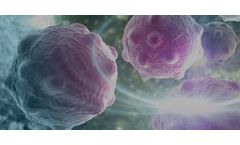Antigen Complex Articles & Analysis: Older
10 articles found
In addition, FcRn can also bind and promote the degradation of IgG-antigen complex multimers, enhancing the antigen presentation of antigen-presenting cells. ...
Firstly, the protein sample is incubated with a specific antibody, then the antibody-antigen complex is enriched with protein A/G magnetic beads, and finally, the level of protein ubiquitination is detected by immunoblotting.ImmunofluorescenceImmunofluorescence is a method for detecting the distribution and location of proteins in cells or tissues and can also be ...
For example, a larger surface area enhances antigen adsorption, promotes antigen storage, and facilitates antigen presentation to antigen-presenting cells (APCs). ...
Immunohistochemistry is the study of the localization, characterization, and relative quantification of peptides and proteins in tissue cells using the antigen-antibody reaction, in which an antigen specifically binds to an antibody and a chemical reaction results in the visualization of dyes such as fluorescein and other chromogens, as well as enzymes, metal ...
SnugDock Tutorials: SnugDock focuses on antibody-antigen binding epitopes and antibody drug development. It addresses challenges in predicting accurate antigen-antibody complexes and explores flexible docking to capture conformational changes during binding. ...
Malaria vaccines have been under development since the 1960s and have faced many obstacles: the malarial parasites produce very complex antigens which made developing a vaccine very challenging. However, substantial development was made with the introduction of mRNA technology and genome sequencing. ...
Targets can be divided into tumor-specific antigens (TSA) and tumor-associated antigens (TAA) according to their expression. Antigens that are only expressed in tumor cells but not in normal cells are tumor-specific antigens and the most ideal targets; antigens that are lowly expressed in normal tissues but ...
HLA, human leukocyte surface antigen, a series of tightly interlocking motifs on the short arm of human chromosome 6, is the central basis for the immune system to recognize and differentiate between allogeneic substances. It is highly polymorphic and corresponds to a complex acquired immune system. It is importantly associated with a variety of autoimmune ...
Read the full article: Beyond Just Peptide Antigens: The complex world of peptide-based cancer vaccines ...
Probably, the immune response is first targeted to HPF4 complexes, but in some patients, antibodies can also react with PF4 alone as the consequence of epitope spreading, and then the deleterious antibodies' effect is higher. ...









